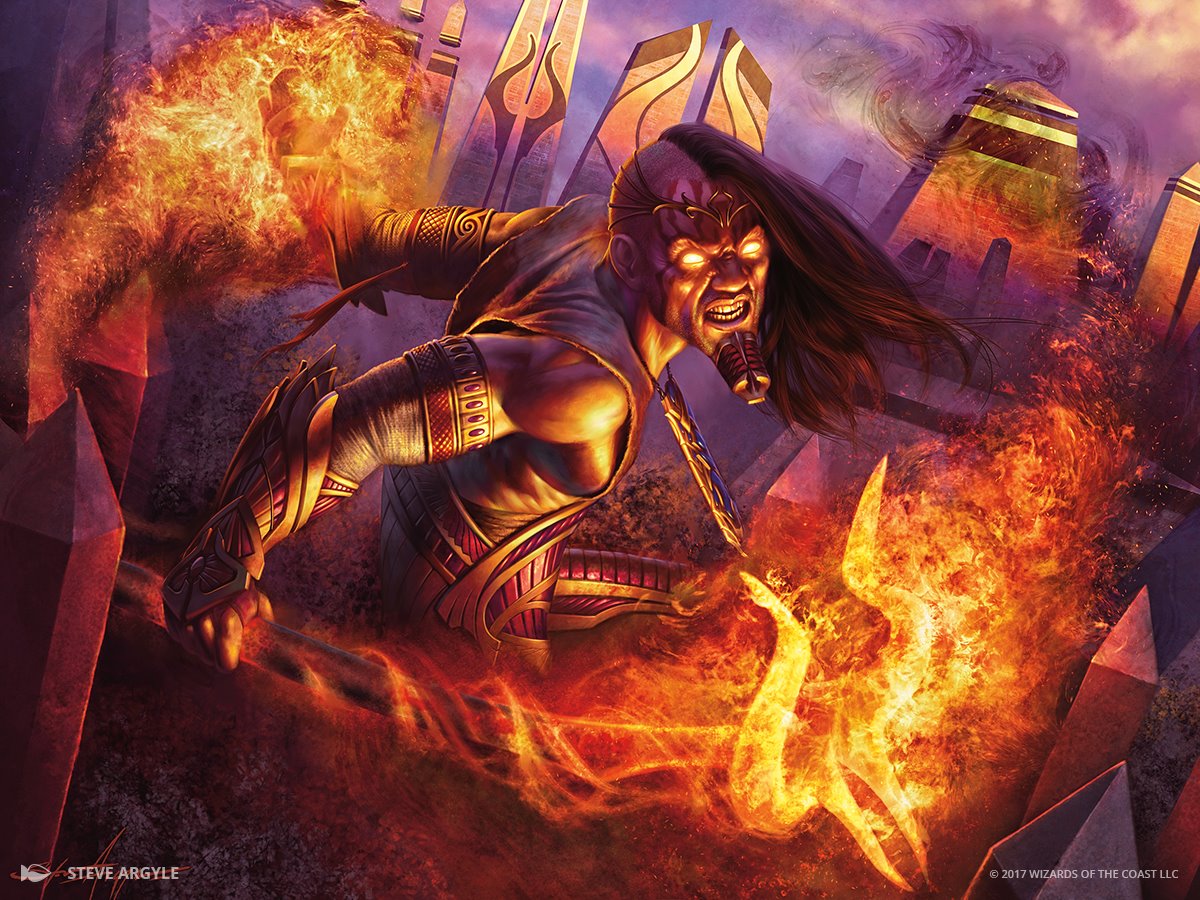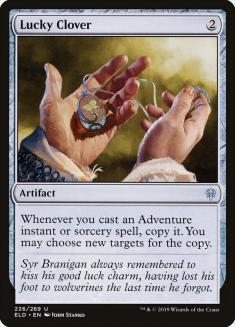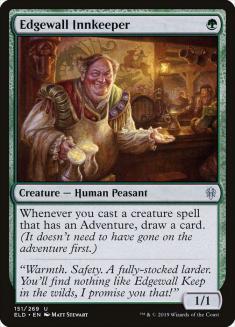Hello, and welcome to this edition of Sullivan’s Satchel. I’ll be back on the commentary grind this weekend, covering a MOCS event with a bunch of my favorite commentators. I can’t say I’m too familiar with what’s going on past that; Randy Buehler sent an email last week detailing everything but I like to keep things a surprise.
I love covering Magic Online (MTGO) events. The combination of “quality of play” and “charming, somewhat archaic platform that I love” gives the tournaments a slightly different vibe from the bells and whistles of Magic Arena. I covered the Champs a few months ago and, besides the play of Michael Jacobs and Logan Nettles occasionally hitting the point where I thought either one of them or myself blacked out, I had a great time. I recommend tuning in if you can.
I’m back on my Prowess stuff in Modern on MTGO. Nothing too fancy, essentially a list from nine months ago, but I’m winning at about a 70% clip and fiddling around with Mishra’s Bauble scratches a certain itch that few cards can. I haven’t found Burn to be very good right now, so if you like Mountains in Modern, I suggest Soul-Scar Mage and friends.
With that, the questions. As always, you can send in yours to [email protected] or DM on Twitter @BasicMountain. I answer a few of these each time, and the best question, as determined by me, wins Question of the Week along with $25 in SCG credit.
From Peter Leja:
However, the card type in question, Adventure cards, are inherently value-generating cards, because you generally get two-for-ones by playing Adventure cards, because you’ll play the Adventure half as a spell for some value and then play the creature as a threat or blocker. Is there a different way these two cards could have been constructed in a different way to incentivize playing these creatures, or should their file just have focused on something different, altogether? Hope this finds you and yours well.
It’s common to bundle the two Adventure enablers together but I see them as very different designs. Lucky Clover is abstractly the much riskier of the two because it’s an artifact and therefore much harder to interact with, but I otherwise think the incentives there are much better. You actually have to do the Adventure thing to get anything out of it, and because of that you’re actually sensitive to the cards that you draw. Bouncing two permanents or dealing two damage to two targets might be good might not be depending on context, and so it does a decent job of producing replayable, dynamic games, even if it is powerful sometimes.
Edgewall Innkeeper is easy to interact with and fragile, but I like the text box a lot less. Since you’re just drawing cards and you don’t even have to do the Adventure thing, it pretty reliably accrues a significant advantage no matter what Adventure cards you draw along with it. I think the fact that it’s such a powerful incentive to just cast your creatures and churn through cards makes the Adventure experience less fun for both players.
I don’t think it’s quite right to view them as two-for-ones. Some of them, like Brazen Borrower, explicitly are not, and some, like Bonecrusher Giant, are sometimes but not all the time. Beanstalker Giant is a “clean” two-for-one I guess, but there’s no promise the game goes on long enough to cast the creature. In all these examples, the creatures on their own wouldn’t sniff a Constructed deck, so even if they are powerful or “generate value” or whatever, you are paying retail for everything. In short, I don’t intrinsically care if the payouts lean into card advantage even if the Adventure cards themselves have an element of that, because I think “drawing a card” and “casting a creature off an Adventure” are quite a bit different.
As far as the enablers goes, my biggest wish was that they were spread out in cost a little bit more, even if the text boxes were kept more or less the same. The fact that they are both so cheap and both lean into “card advantage” (I think Lucky Clover is a trickier example, but it definitely feels similar even if I think they have significant differences in practice) makes the experience sort of blend together, and spreading the costs out (with whatever adjustments you made to power and toughness, other abilities) would make the sum of games feel a lot different, I think.
From Kenny Wisdom:
I follow professional sports pretty closely and I don’t think the individual in question gets much say in what their legacy is; other people get to tell their stories and it all adds up. As you become more visible in some endeavor, your social circle will often become composed more and more of people in the same position, and that can poison the well; you think that group represents the whole but they’re just a sliver of the overall community and usually have a narrow perspective of their own.
If people enjoy my articles, commentary, or whatever else, that’s great, and if any of that is fondly remembered down the line that will make me happy. But I know my “legacy” is also scattered with some bad behavior, especially in competitive settings, and that doesn’t go away or isn’t part of the total story just because the person in question doesn’t have as much pull in the community as someone else. I don’t think it’s a matter of adding and subtracting and churning out a score or a grade, just that these things can never be summed up in a single sentence.
It’s also a complicated topic for me because this is all paid work. I aspire to do it well, but there’s an economic incentive in front of me; none of this is for charity. I think the average judge, working in relative obscurity for very little compensation, propping up a local or regional scene, is doing an unambiguous service to the game that I don’t think I share. Again, not about ranking one person above another, just that it’s tricky.
As far as “the takeaway,” I’m a firm believer that it’s not for me to weigh in on. I say or write whatever I do and then it belongs to everyone else and I think the burden of clarity of message rests on me, not on the viewer to unpack some “hidden meaning” or “narrative” or anything else. Plenty of stuff I’ve said was either off the cuff or I disagree with now or a myriad of other reasons that I don’t consider it to be binding or canonical, so I hope anyone trying to extrapolate some tries to view it with a wide lens.
From Eric Wong:
When discussions of this block happen from current employees of Wizards, their starting point is always the same: it didn’t sell well. All their other reasoning flows from that. The job of a Magic set is to sell product, and Time Spiral didn’t.
This is such a spectacularly bad line of thinking that I’m amazed I even need to address it, but since they’ve been saying this same thing since 2008, clearly something has to be done. Art is not sales. Art is not defined by commerce. The greatness of art is contained in the work itself; art’s quality is not the amount of money it made, and it’s certainly not defined by its accessibility.
I really hope this line isn’t from me; it definitely sounds like something I could have said in 2014. Not that it’s an entirely invalid way of thinking, just that it’s too extreme a position for me in 2021, and probably was in 2014 as well.
The purpose of any Magic set is to sell itself. There are lots of ways to go about doing it. Some are better or more sustainable or more “artful” than others. Setting aside the tautology, Magic is a multiplayer experience. The analogue isn’t a painting or an album, but a concert or a gallery. It is communal in nature. I think accessibility is a valuable element in art (not the only value, and not infinitely valuable) and this is especially so when the art assumes more than one person to engage with it. If the purpose of art is to share some experience, idea, or fundamental truth, the commonality, its ability to transcend different backgrounds and vocabularies and experiences, is a critical part of analyzing its overall quality or impact.
Even if you don’t think accessibility is that valuable, I can’t countenance that leading someone to think inaccessibility is desirable, and Time Spiral block is absolutely that. A card file only has so much room, and you can take it up with evocative, resonate, clean mechanics and designs or with commons that make opaque references to Earthbind and lands with morph. There’s room for some fancy stuff, but when a piece of art is hoping to appeal to your sense of “I get this and other people don’t,” it’s not only inaccessible but actively exclusionary. As a wise man once said, “Remember when is the lowest form of conversation.”
So, “it didn’t sell well” is a crass and reductive way of saying that a piece of art that’s already exclusionary in nature (requires at least one other party, expensive, enormously complicated rules set, etc.) was exclusionary to the point that even its captured fans weren’t that interested. That’s an infinitely more damning critique of a work of art than anything I could write.
Last, the Question of the Week and winner of $25 in SCG Credit, from Lorena Lagazeta:
Thanks a Lot.
I’m extrapolating a bit from context here that Lorena is a relatively new Magic player who is looking to dip their toes into the Pioneer format. May I recommend Boros Wizards?
Creatures (21)
- 4 Eidolon of the Great Revel
- 4 Monastery Swiftspear
- 1 Zurgo Bellstriker
- 4 Soul-Scar Mage
- 4 Ghitu Lavarunner
- 4 Viashino Pyromancer
Lands (19)
Spells (20)
Sideboard

Simple, effective, not that much money to build, powerful enough that you shouldn’t expect the deck to be invalidated by a new set, but not so strong that any piece of this is at risk of banning (most likely). That’s a lot of dual lands, however. If that’s cost-prohibitive, we can explore a straight red version.
Creatures (22)
- 4 Eidolon of the Great Revel
- 4 Monastery Swiftspear
- 2 Bomat Courier
- 4 Soul-Scar Mage
- 4 Ghitu Lavarunner
- 4 Viashino Pyromancer
Lands (20)
Spells (18)
Sideboard

This build isn’t strictly worse or anything; Boros Charm sucks against creature decks so something like this is better against Mono-Black Aggro or Mono-Green Devotion. More importantly, a bunch of the expensive dual lands have been cut so if cost/collection is an issue, this is an easier thing to put together than just about any other credible option, and $25 in SCG credit should get you a lot of the way there. Happy building.




